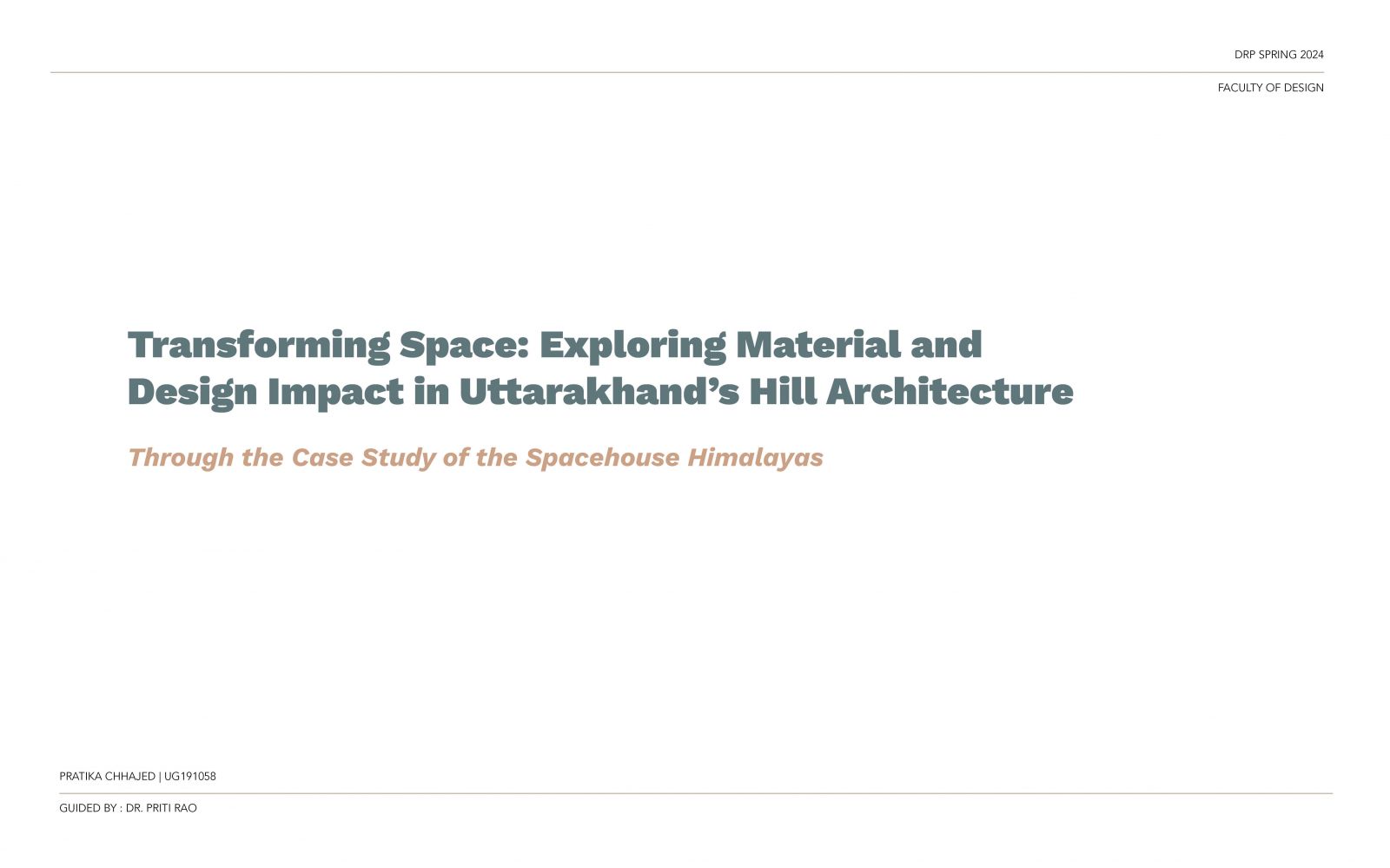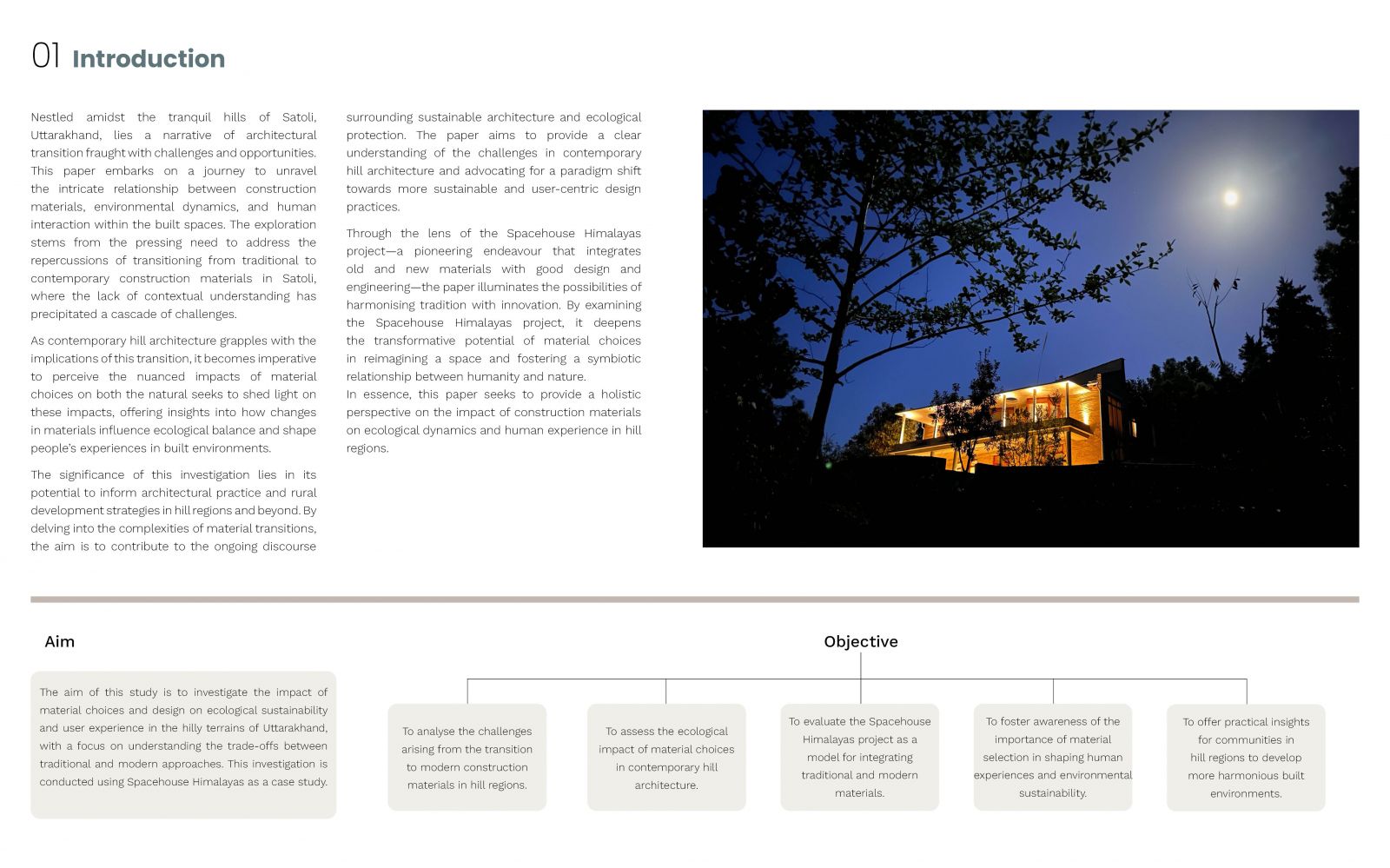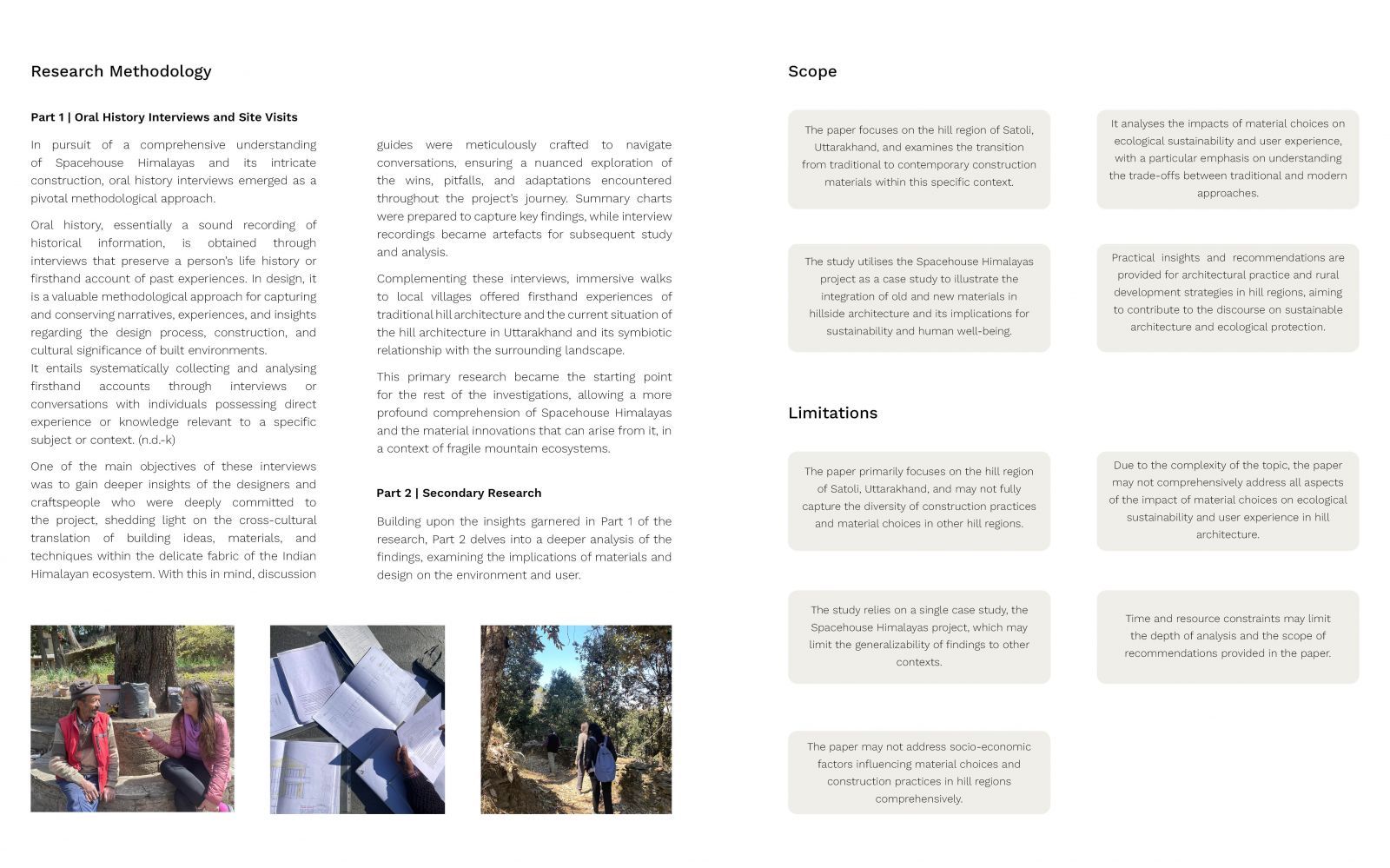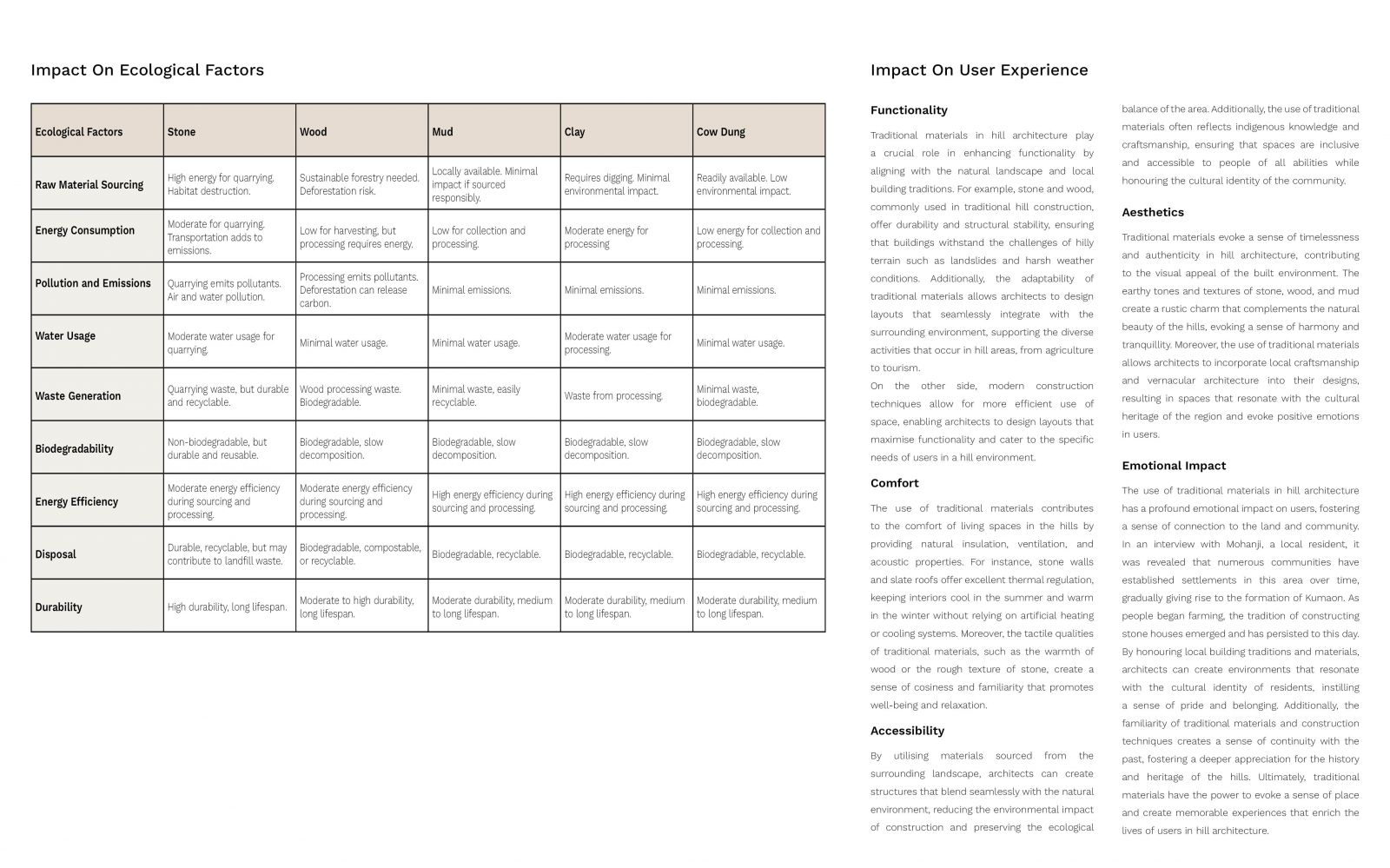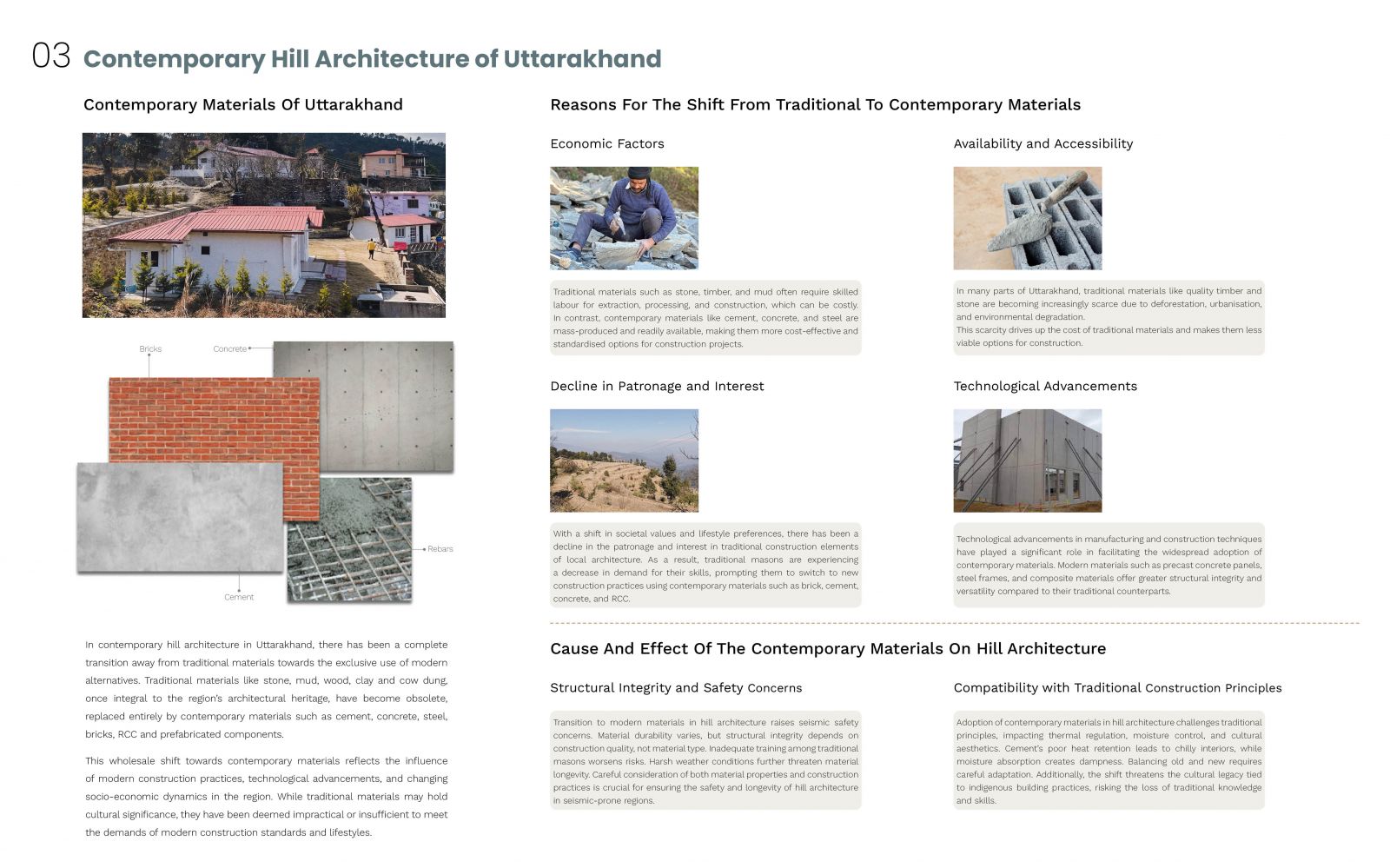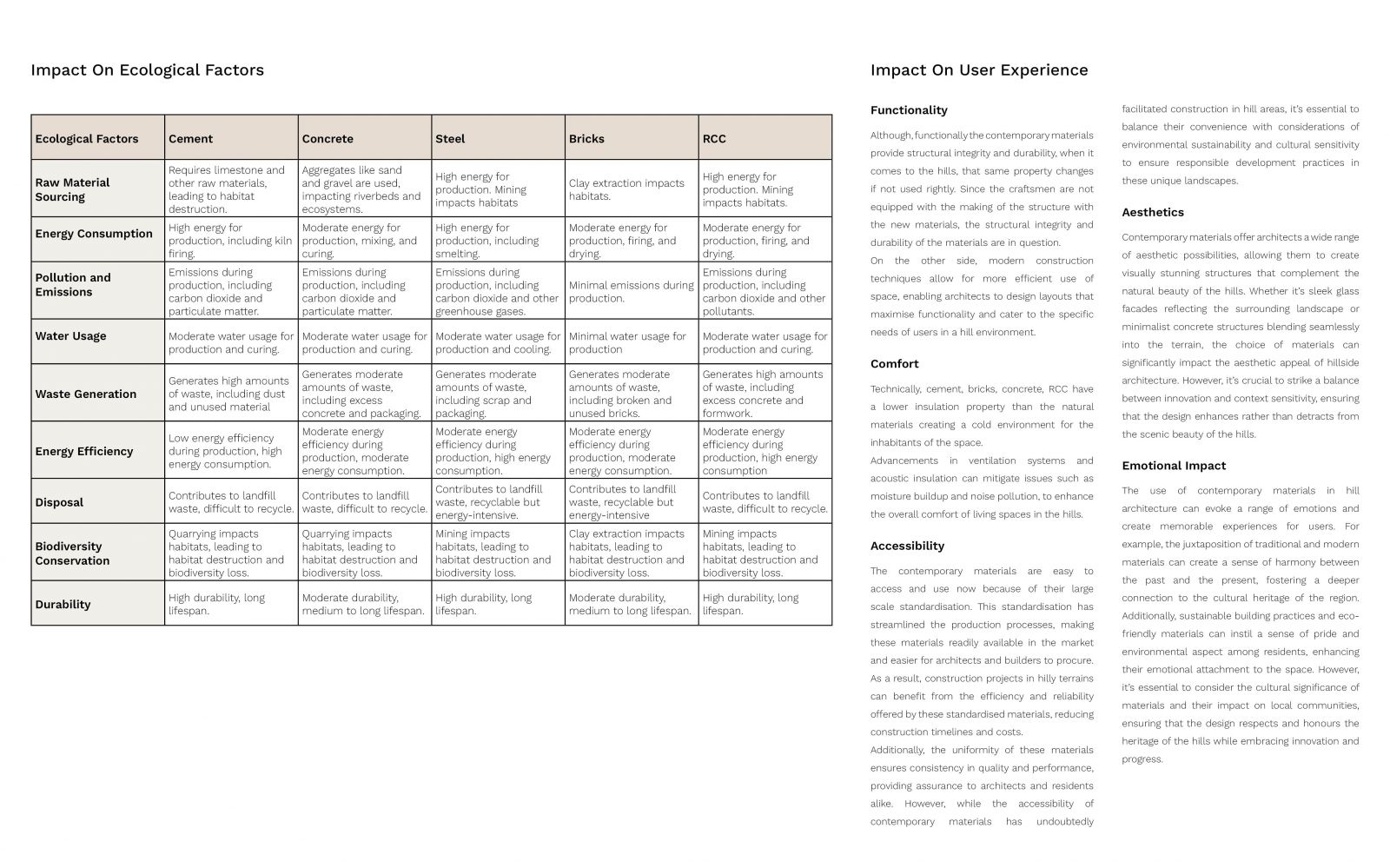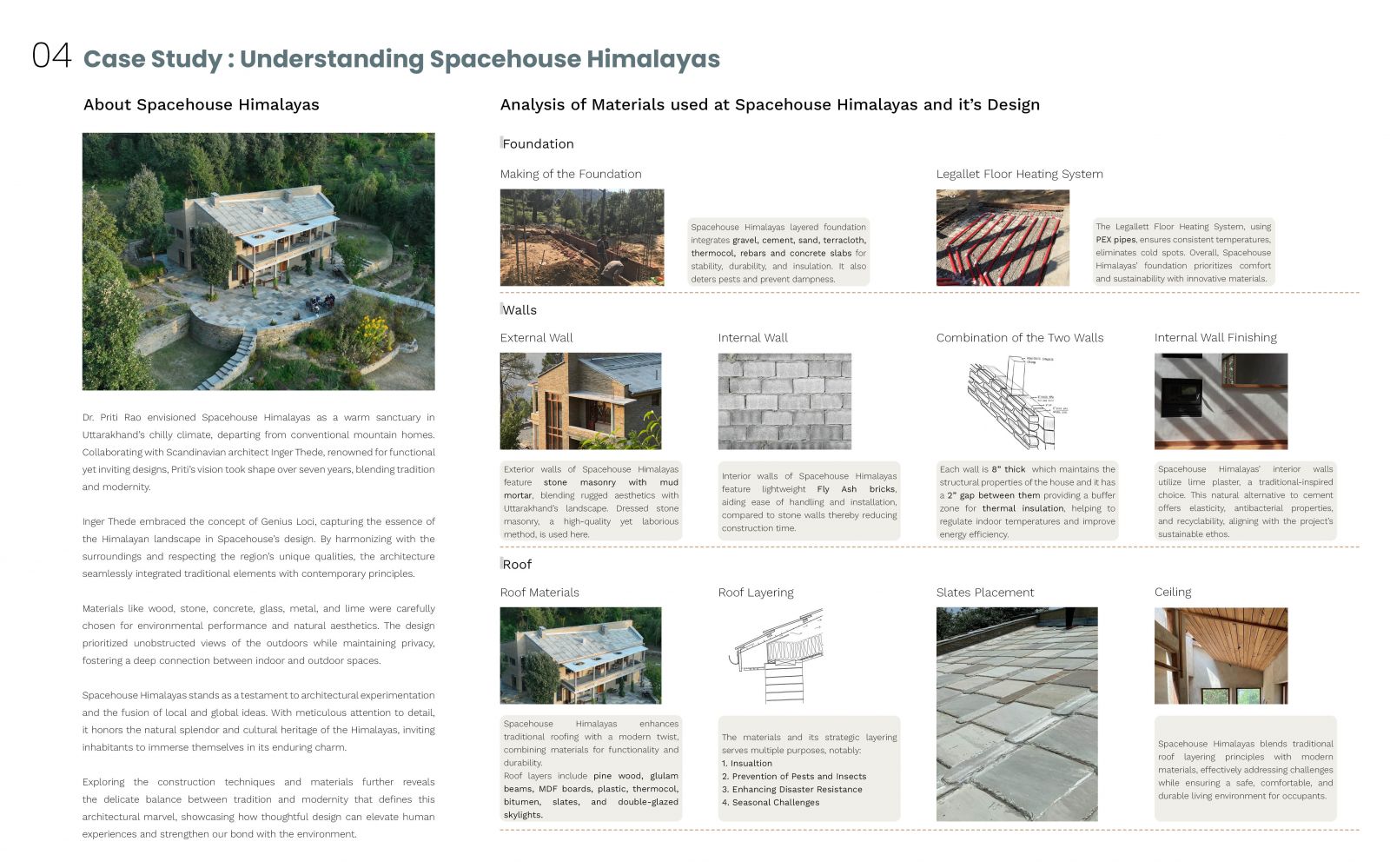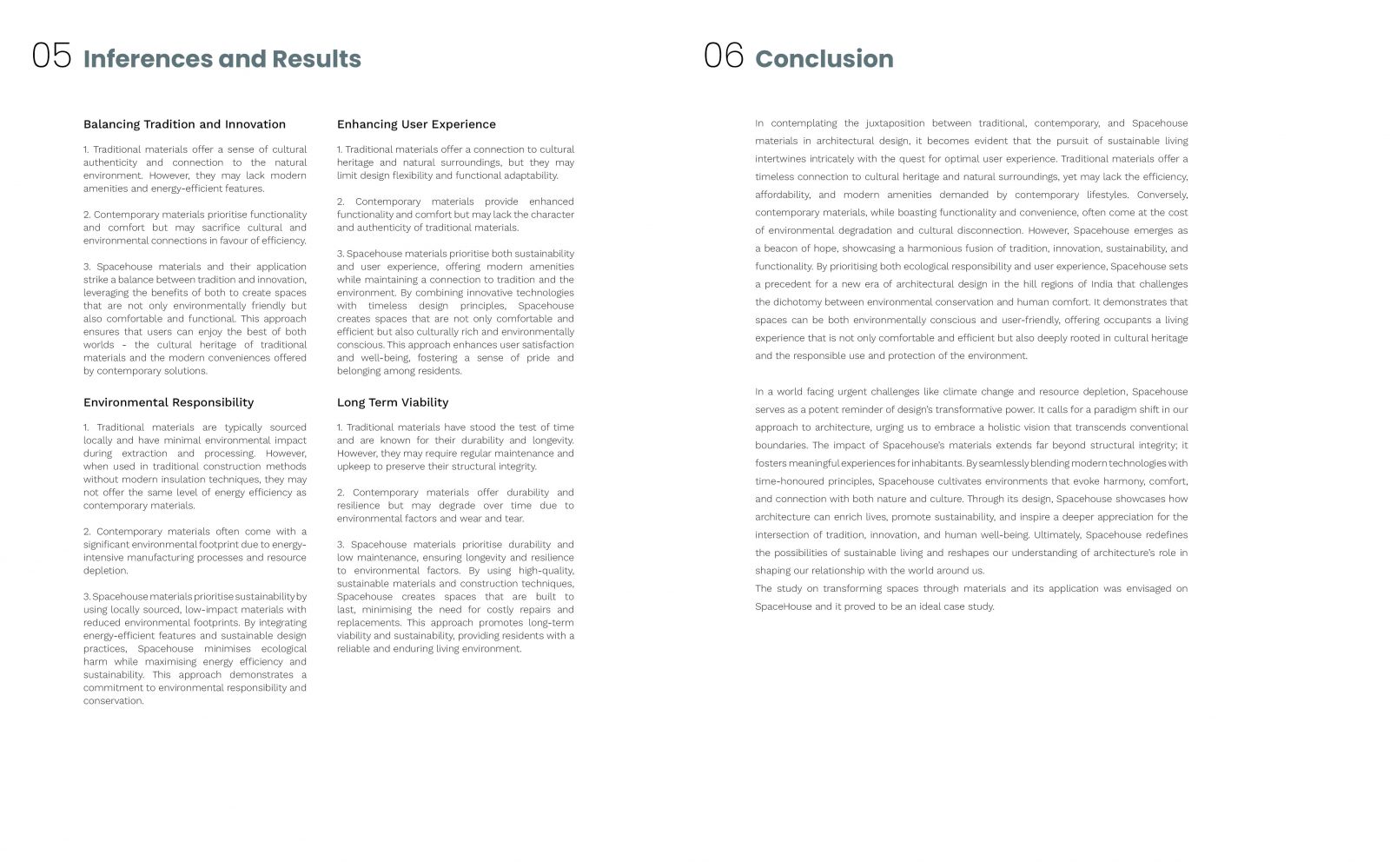Your browser is out-of-date!
For a richer surfing experience on our website, please update your browser. Update my browser now!
For a richer surfing experience on our website, please update your browser. Update my browser now!
In the hilly terrains of Uttarakhand, the choice of materials and their design plays a critical role in shaping ecological sustainability and user experience. Traditionally, vernacular materials have served this purpose, offering environmental benefits despite requiring time-intensive construction processes. However, rapid urbanisation has spurred a shift towards faster-paced construction materials, potentially compromising crucial principles that once ensured homes’ resilience to earthquakes, thermal stability, and superior user experience. This research delves into the ongoing debate surrounding the impact of material choices on ecological sustainability and user experience in Uttarakhand’s evolving landscape. It highlights the dilemma: while traditional materials align with ecological values, they may not adequately address contemporary challenges like rapid development and climate change. Conversely, modern principles offer solutions, but often, the materials lack the contextual appropriateness necessary for hilly regions. At the heart of the discussion lies the case study of Spacehouse Himalayas, which showcases a pragmatic integration of old and new materials with thoughtful design and engineering. Through this case study, the paper elucidates the potential for reconciling tradition with modernity to create sustainable and user-centric solutions in hillside construction. This approach prioritises logic over romanticism. Ultimately, this synthesis underscores the need for informed decision-making in architectural practices to prioritise environmental sustainability and user well-being. By presenting a nuanced perspective on material impact in hillside construction, the paper aims to inform future endeavours and contribute to more sustainable and user-centred solutions in Uttarakhand and other mountain regions around India.
